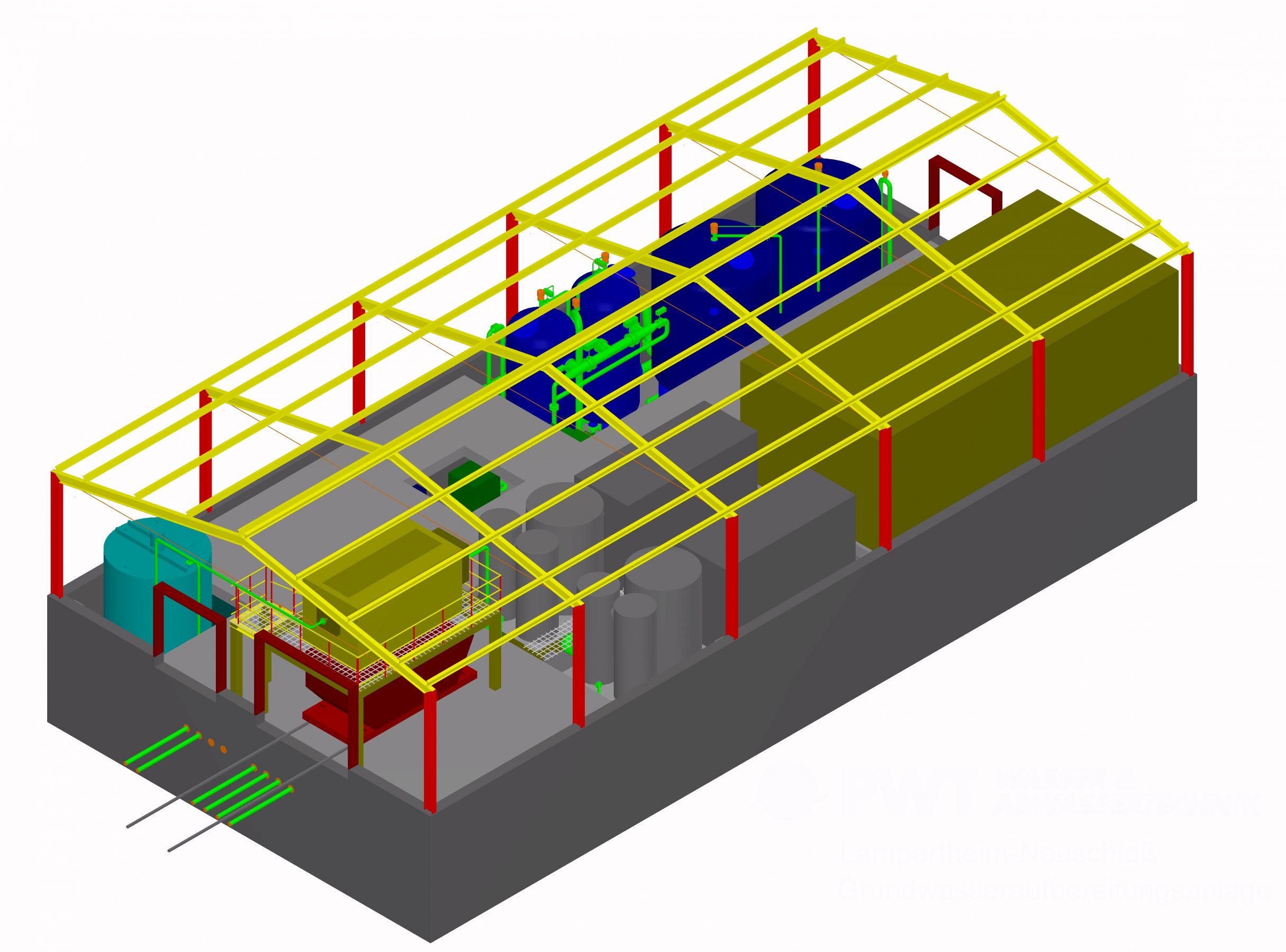Extension of the Lampertheim-Neuschloss groundwater remediation plant and construction of a new preparation and dosing station for implementing a new arsenic removal process
PWT Wasser- und Abwassertechnik GmbH operates the groundwater remediation plant (GWRP) Lampertheim-Neuschloß on behalf of HIM GmbH situated 20 km northwest of Heidelberg.
A chemical factory was operated in Neuschloss until the end of the 1920's. The site of this factory is contaminated in particular by arsenic, but also by AOBH and various heavy metals as well as by dioxins and furans.
In addition to major soil remediation works between 2000 and 2015 a groundwater remediation plant for arsenic removal has been in operation since 2003. The plant was built and is currently operated by PWT Wasser- und Abwassertechnik.
The Bürstädter Wald waterworks is located downstream of the arsenic plume, therefore the removal of arsenic is also of great importance for the water supply. However, due to the difficulty of mobilising the arsenic in the subsoil, only around 50 kg of arsenic could b dissolved by the groundwater flow each year and removed from the ground by the GWRP. Several tons of arsenic are still in subsoil. Under these conditions the remediation could not have been completed within the next 100 years.
Process for Arsenic Removal applied for the first time in the world
In a new process developed by researchers at the University of Heidelberg and supported by the engineering firm CDM Smith Consult GmbH arsenic is now dissolved and mobilised in the soil using a phosphate solution. Following laboratory and field tests HIM decided to apply the process on a large scale. The aim is to complete the remediation within 10 years.
PWT constructed the necessary new preparation and dosing station and also extended the existing groundwater remediation plant. With the previous arsenic concentrations in the range of approx. 0.2 - 0.3 mg/l at 30 m³/h in the ground water, the treatment process of a two-stage iron sedimentation process followed by two gravel and two activated carbon filters was considered sufficient.
For the arsenic concentrations expected in the future from the ground water, which could average 2.5 mg/l and peak at 5 mg/l as well as phosphate concentrations in the range of 100 mg/l, the plant was extended by a two-line phosphate pre-precipitation using milk of lime. Due to the considerably larger sludge quantity, the sludge dewatering was also changed from a chamber filter press to a vacuum belt filter. The target values for the purification of the pure water of 10 µg/l arsenic, 25 µg/l AOBH and 2 mg/l arsenic remain unchanged.
